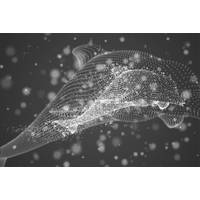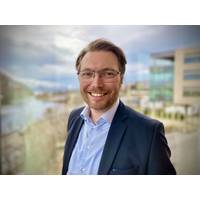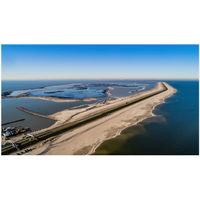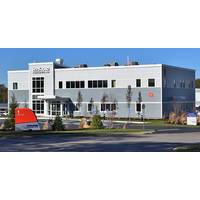
UTEC Partnership in Saudi Arabia
to the offshore energy industry.This partnership strengthens UTEC’s presence in the Saudi Arabian energy and geoscience subsea survey market, with Front End as its partner.Front End’s companies specialize in renewable energy, oil field services, information and communication technology, building materials, infrastructure, industrial, maritime services and manpower supply for diverse economic sectors in the Kingdom of Saudi Arabia and neighbouring countries.Front End will play a pivotal role in UTEC’s growing presence in Saudi Arabia, by promoting survey services across new developments

IMO Targets Subsea Ship Noise with New Draft Guidelines
specific objective of the GloNoise Partnership is to assist developing countries and regions to raise awareness, to build capacity and to collect information to assist the policy dialogue on anthropogenic underwater noise from shipping. To support this process, data and analysis tools and capacity building materials will be developed, rolled out and implemented globally and in the participating countries

Norway Leads Maritime's Cluster Collaboration
got a job. He landed in sales for an importer of components for the furniture industry. Among his customers were ship outfitters – “my first taste of maritime”. He progressed to key account manager commuting to head office in Copenhagen. Then, in 2012, he joined Saint Gobain-owned building materials and interiors supplier Optimera in a similar role. “I soon found out Saint Gobain had a host of materials that could also be used in ships. So, we decided to set up a dedicated Marine Applications division embracing seven subsidiaries producing everything from glass to pipes and valves

Surveyors Map Sunken Liberty Ship off Texas Coast
.Equipment used to map the ship was a Teledyne Reson SeaBat T-20 multibeam sonar with integrated Applanix POSMV for Motion. Applying the mesh tools to the multibeam survey shows an example of the shipwreck.Texas has been involved in artificial reef development for nearly 50 years. Numerous reef building materials have been used over the years. However, the first highly successful artificial reef development occurred during the mid-1970’s when 12 obsolete Liberty Ships were sunk at five different sites in the Gulf of Mexico. During deployment to the Freeport Liberty Ship Reef site in 1976, the

Dutch Flood Defense, The Natural Way
of the North Sea’s extreme weather events, and from flooding from inland freshwater river systems.After years of exposure to the elements, the Houtribdijk was in need of major maintenance. The traditional way to make it more secure would have been to bolster the barrier of rocks and other building materials that already protect the levee from the impact of water during storms. But this time, the authorities decided to try something different.A nature-based solution for a protective barrierThe authorities decided to opt for a more nature-based solution: the creation of two 140 m wide artificial
Ecosystem based Adaptation to Climate Change
workshops built on existing information to document and map the critical ecosystem dependencies for local communities, then ascertain the vulnerability of these ecosystem services to climate change. Ecosystem services associated with the basic provisions of drinking water, food, raw materials (e.g. building materials) and income generation were commonly found to be vulnerable to climate change. An EbA Options Assessment prioritised the key EbA preferences for building community resilience to this climate change vulnerability, noting also other non-climate threats to ecosystem services. Implementation

Hydroid Opens New Headquarters
.-based Rubicon Builders to design and build the 15,000 square-foot building. The headquarters is an open concept layout and contains administrative offices, an IT office and server room and collaborative work areas. With guidance from Cape Light Compact, the design team selected energy-efficient building materials and facilities equipment, including LED lighting throughout. Hydroid also installed electric vehicle charging stations for its employees. "As we continue to grow, we wanted to create a space where our employees can thrive," said Duane Fotheringham, president of Hydroid. "
Japanese Tsunami Debris Still Washing on US Shore
; The Oregon Sea Grant, a program at Oregon State University funded by the National Oceanic and Atmospheric Administration (NOAA), has been working with researchers at Japan's Tottori University to monitor tsunami debris. An estimated five million tons of wreckage - everything from cars to building materials, boats and docks - washed into the Pacific, and about 70 percent sank quickly to the ocean floor, experts in the United States and Japan said. But items with buoyancy eventually caught the Pacific Ocean's currents and have since lodged as close as 25 miles (40 km) off the North American
OceanGate Developing Manned Submersible With University of Washington
will allow up to five engineers, scientists or explorers to travel up to 3,000 meters below the surface for a myriad of tasks and operations, ranging from scientific study to oil and gas exploration and supervision. Featuring a large 180 deg viewing dome for collective observation, state of the art building materials and a lightweight design, Cyclops is designed to be the most advanced and mobile deep-sea manned submersible in the world. Project Cyclops was born out of OGI’s appreciation that the oceans contain expansive resources, from oil and gas reserves to potential cures for cancer, and there
 December 2025
December 2025





